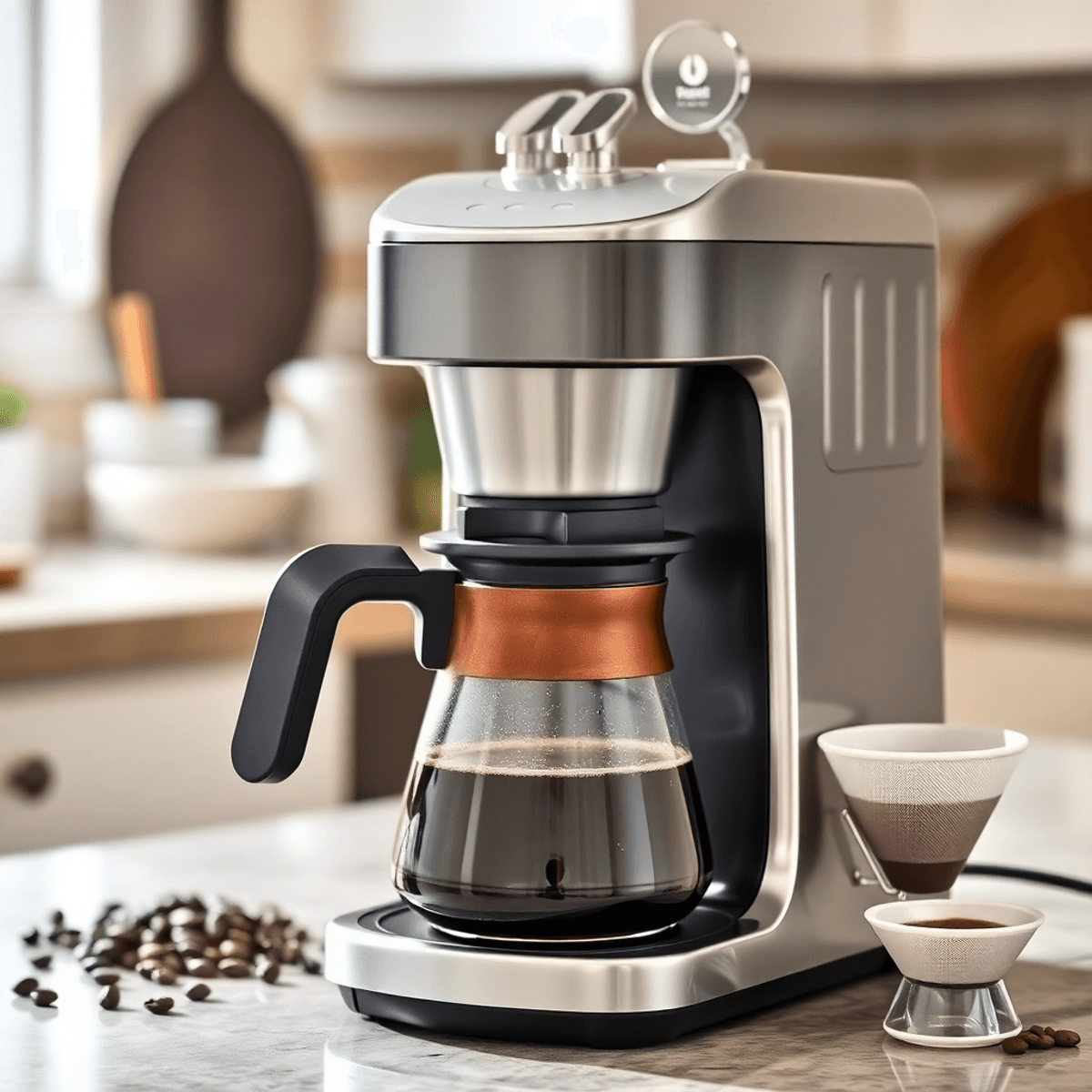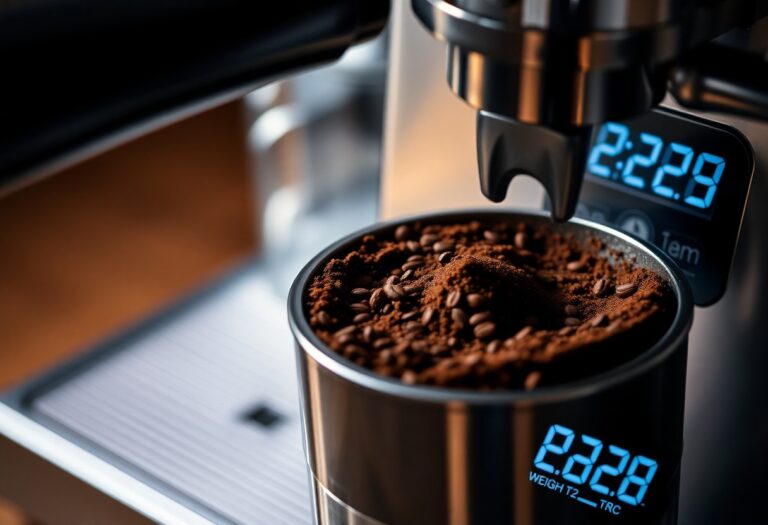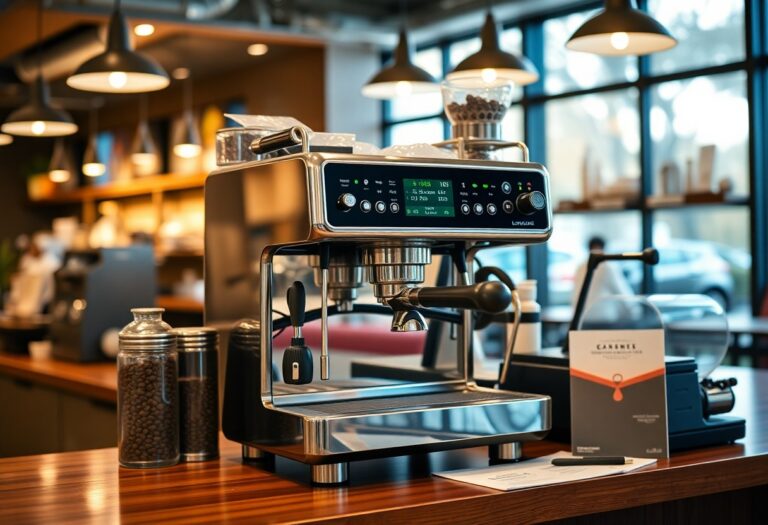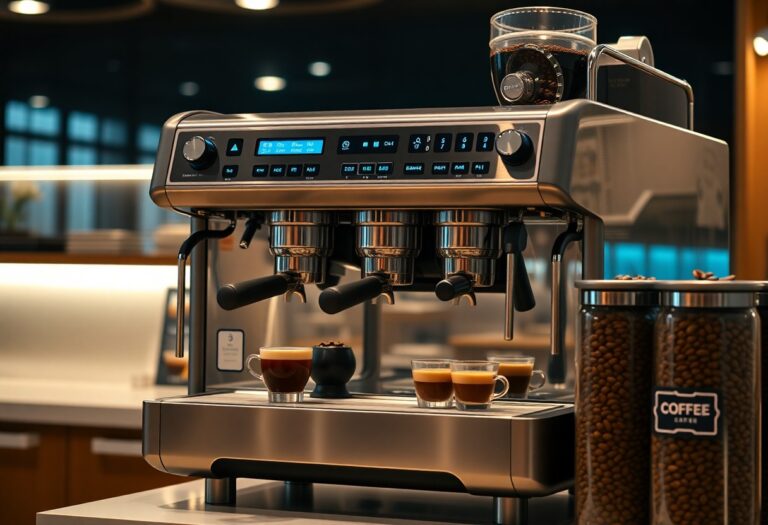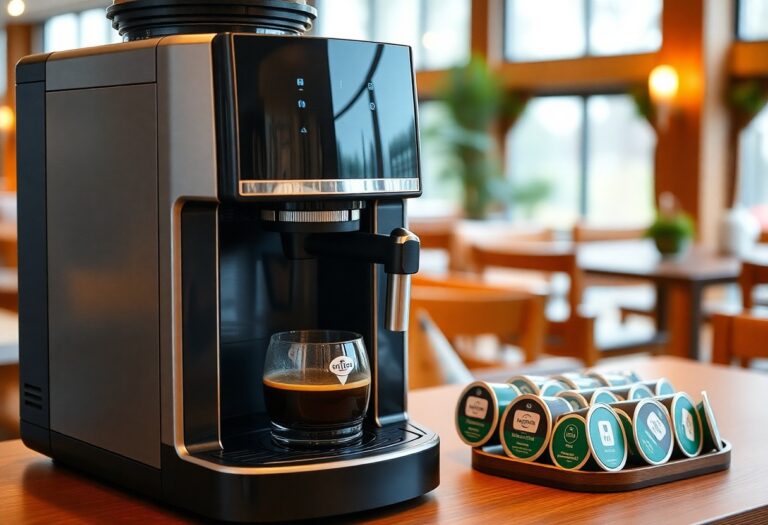How to Use a Drip Coffee Machine: Brewing Instructions
A drip coffee machine is a popular brewing device that works by dripping hot water over ground coffee in a filter, extracting the flavors into a carafe below. To achieve the best-tasting coffee, it is crucial to follow the brewing instructions carefully. Each step impacts the final flavor and quality of your brew.
Start your day right with a perfect cup of coffee using your drip coffee machine. Let’s dive into the details of how to master this art for a delightful coffee experience. This includes understanding how much coffee to put in your machine for the perfect ratios, learning how to program your Cuisinart coffee machine, and discovering effective methods like using vinegar for cleaning your coffee machine. If you own a Ninja model, we also have tips on personal maintenance for your Ninja coffee machine. Additionally, exploring other brewing techniques such as using a French press can further enhance your coffee experience.
Understanding Drip Coffee Machines
A drip coffee machine works by heating water and allowing it to flow slowly through ground coffee held in a filter, extracting the flavors into a pot or carafe below. The process mimics manual pour-over brewing but automates water distribution and temperature control for consistency and ease.
Key components of a drip coffee machine include:
- Reservoir: This is where you add fresh, cold water before brewing. The reservoir feeds the heating element and ensures a steady supply of hot water during extraction.
- Heating Element: Heats the water to an optimal range of 195–205°F (90–96°C). Maintaining this temperature is crucial for proper flavor extraction without bitterness or sourness.
- Filter Basket: Holds the coffee grounds inside either a paper or reusable filter. Water drips evenly through the grounds here, absorbing oils and soluble compounds that form the coffee’s taste.
- Carafe: Collects brewed coffee as it drips from the filter basket. Carafes can be glass or thermal; each affects how long the coffee stays warm without losing flavor.
- Drip Nozzle: Controls the flow of hot water over the coffee grounds, distributing it evenly to ensure balanced extraction.
Understanding these parts helps you troubleshoot issues like uneven brewing or weak flavor by pinpointing whether water temperature, grind size, or filter choice needs adjustment. This knowledge sets the foundation for preparing your machine properly before brewing.
For instance, if you’re using a Hamilton Beach coffee machine, you can follow this operating guide for best results.
Moreover, regular maintenance is key to ensuring your drip coffee machine functions optimally. You can find helpful tips on [how to clean your drip coffee machine](https://www.coffeemakerexpert.com/how-to-clean-a-drip-coffee-machine-maintenance-instructions) or even how to descale a Breville coffee machine which are both essential processes in maintaining your coffee maker.
In case you’re also interested in K-cup machines, there’s a comprehensive guide on how to clean a K-cup coffee machine that could prove useful too.
Preparing for Brewing
To brew a delicious cup of coffee with your drip coffee machine, follow these essential steps:
- Fill the Water Reservoir: Start by filling the water reservoir of your drip coffee machine with fresh, cold water. Cold water helps achieve the optimal brewing temperature.
- Choose Your Filter: Decide whether to use paper filters for easy cleanup (but potentially affecting taste) or reusable metal/cloth filters that are eco-friendly and can enhance the coffee’s oils and flavors.
- Get the Right Grind Size and Coffee-to-Water Ratio: Use a medium grind size for your coffee beans, similar in texture to sea salt. A typical ratio is around 2 tablespoons of ground coffee per 6 fluid ounces (180 ml) of water. Adjust these measurements based on your desired strength preferences.
By following these steps, you’ll be well on your way to brewing a flavorful and aromatic cup of drip-brewed coffee. If you’re looking to explore different brewing methods, such as pour-over coffee, consider trying those techniques for an even more personalized cup!
Brewing Process and Serving Tips
The water temperature plays a crucial role in the extraction process. Drip coffee machines heat water to an ideal range of 195–205°F (90–96°C). This temperature ensures optimal flavor extraction without causing bitterness or under-extraction. The brewing time typically lasts between 5 to 10 minutes, depending on the machine’s design and coffee quantity.
Key steps during brewing:
- Once you start the machine, hot water is distributed evenly over the coffee grounds.
- Water passes through the grounds, extracting oils and soluble compounds that contribute to the coffee’s aroma and body.
- Brewed coffee collects in the carafe below.
After brewing completes and dripping stops, remove the carafe promptly to avoid over-extraction or bitterness from sitting on hot warming plates too long. If you want to keep your coffee warm without affecting its taste:
- Transfer the brewed coffee into an insulated container or thermos designed for heat retention.
- Avoid using the machine’s warming plate for extended periods as it can degrade flavor by overheating.
These tips help maintain freshness and aroma when serving multiple cups over time. Proper handling at this stage is essential to enjoy every cup with balanced taste and temperature stability.
Maintenance Tips for Your Coffee Machine
To ensure your drip coffee machine continues to function optimally, regular maintenance is required. One important aspect of this maintenance is descaling, which involves removing mineral buildup inside the machine. For a detailed guide on how to descale your Cuisinart coffee machine, you can follow this step-by-step process. Alternatively, if you own a Keurig coffee machine, there’s a specific guide available for that as well.
If you’re looking for alternative brewing methods, our resource on manual brewing techniques could be quite helpful. And if you’re interested in exploring other types of coffee machines, such as a French press, we’ve got comprehensive information on that topic too.
For more general advice on maintaining your coffee machine’s performance, including descaling procedures applicable to various models, our comprehensive coffee machine decalcification guide should serve you well.
Maintaining Your Drip Coffee Machine for Longevity and Flavor Enhancement
Importance of Regular Cleaning and Descaling for Machine Longevity
Regular maintenance of your drip coffee machine is crucial to ensure its longevity and optimal performance. One key aspect of this maintenance is [descaling your machine](https://www.coffeemakerexpert.com/how-to-clean-a-coffee-machine-with-vinegar-natural-cleaning-method), which removes mineral deposits that can build up over time, affecting the flavor of your coffee and the efficiency of the machine. It is recommended to descale your coffee maker every 1-3 months, depending on water hardness. For those using a Keurig, a specific ultimate maintenance guide can provide valuable insights.
Storing Coffee Properly for Freshness
Storing your coffee beans or grounds in an airtight container is essential to preserve their freshness and flavor. Exposure to air, moisture, light, and heat can degrade the quality of your coffee. It’s best to store coffee in a cool, dark place away from direct sunlight and heat sources. Avoid storing coffee in the refrigerator or freezer as the moisture can affect the taste. Invest in a quality airtight container to maintain the aroma and flavor of your coffee for longer periods.
By following these essential maintenance tips, including regular cleaning and proper storage of your coffee, you can enhance both the longevity of your drip coffee machine and the flavor of your brew.
Advanced Brewing Techniques with a Drip Coffee Machine
Mastering the nuances of your drip coffee machine can elevate your coffee experience beyond basic brewing. Two practical techniques—paper filter pre-wetting and grind size adjustment—offer noticeable improvements in flavor and aroma.
Paper Filter Pre-Wetting
- Paper filters sometimes impart a subtle papery or cardboard-like taste to your coffee.
- To prevent this, rinse the paper filter with hot water before adding ground coffee.
- This step removes residual paper fibers and warms the filter, encouraging better extraction.
- Discard the rinse water before proceeding with brewing.
- The result is a cleaner cup, free from unwanted flavors that can mask your coffee’s natural profile.
Grind Size Adjustment
- The grind size directly impacts how water interacts with coffee grounds during brewing.
- A medium grind resembling sea salt generally works well for drip machines.
- If your coffee tastes weak or watery, try a slightly finer grind to increase extraction.
- Conversely, if the brew seems bitter or over-extracted, use a coarser grind to slow down extraction.
- Experimenting within this range helps you tailor strength and flavor intensity to personal preference.
These techniques require minimal effort but significantly refine the taste quality. They demonstrate how understanding small details about your drip machine setup empowers you to craft a cup that aligns perfectly with your palate.
If you’re using a specific model like a Black and Decker or a Ninja coffee machine, it’s essential to follow the specific operating instructions for optimal results. Additionally, regular maintenance such as cleaning your Black and Decker or Mr. Coffee machine can enhance performance and longevity.
Using Filtered Water in Your Drip Coffee Machine
Using filtered water in your drip coffee machine significantly influences the quality and flavor of your brew. Tap water often contains minerals, chlorine, and impurities that can alter taste and even damage your machine over time. Filtered water helps you avoid these issues, ensuring a cleaner, more balanced cup.
Benefits of Using Filtered Water
- Improved Taste: Removing chlorine and unwanted minerals enhances the natural flavors of your coffee beans. You’ll notice clearer, purer notes without any off-flavors caused by tap water.
- Consistent Extraction: Minerals in water affect how coffee grounds release flavor compounds. Filtered water offers a stable mineral content, leading to a more predictable extraction process.
- Machine Longevity: Filtering out hard minerals reduces scale buildup inside your machine. This keeps heating elements working efficiently and decreases maintenance needs. For example, regular cleaning using methods such as those described in this guide on how to clean a Cuisinart coffee machine, can further enhance its lifespan.
- Better Aroma: Cleaner water preserves the delicate aromatic oils in coffee, resulting in a richer sensory experience.
Practical Tips for Using Filtered Water
- Use a high-quality home water filter pitcher or an under-sink filtration system.
- Avoid distilled or overly soft water; some minerals are necessary for proper extraction.
- Regularly change filters according to manufacturer instructions to maintain effectiveness.
Filtered water remains a simple yet powerful way to elevate your drip coffee brewing routine. It aligns perfectly with other best practices described in How to Use a Drip Coffee Machine: Brewing Instructions, helping you extract the fullest flavor from each batch. Additionally, incorporating filtered water into your routine can minimize the need for frequent deep cleans, such as those requiring vinegar for descaling, thus streamlining your coffee-making process.
Conclusion
Mastering How to Use a Drip Coffee Machine: Brewing Instructions unlocks the potential for a consistently excellent cup of coffee. This method replicates a pour-over style brew, combining automation with the precision needed to extract rich flavors. You gain:
- Convenience without sacrificing control over brewing variables
- A balanced cup tailored by grind size, coffee-to-water ratio, and water quality
- The ability to enjoy fresh coffee quickly with minimal effort
Drip coffee machines reward attention to detail in preparation and maintenance. When you follow correct steps—from choosing the right filter and grind, to using filtered water and cleaning regularly—you elevate your daily brew experience. This approach transforms a simple appliance into a reliable tool for producing flavorful, aromatic coffee that satisfies.
Embrace the process, experiment with adjustments, and appreciate how this straightforward brewing method can enhance your enjoyment of coffee every day.

